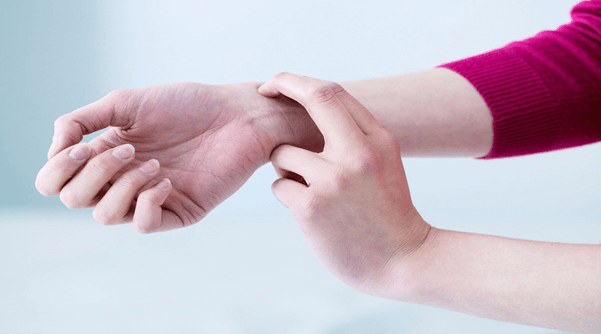Human Pulse DefinitionThe American Heart Association (AHA) states that a healthy athlete may have a resting heart rate between 40 and 60 beats per minute. The usual adult heart rate ranges from 60 to 100 beats per minute. The Pulse, commonly called the heart rate, is the wave of blood in the artery brought on by the left ventricle contracting throughout a cardiac cycle. Students studying biology must understand the several bodily systems that make up the human body. Numerous systems are constantly in use within the body. One of them, the cardiovascular system, is crucial to maintaining human health. This process involves blood movement through vessels to and from various bodily parts. The blood also carries vital nutrients and oxygen. Its main components are eliminating carbon dioxide and oxygen distribution throughout the body. The main organ in charge of this system is the heart. This article will discuss the human Pulse in detail. Body PulsesThe body Pulse symbolizes a person's cardiovascular system. It is measured to gauge how well the human cardiac cycle is functioning. The impact of the blood on the elastic wall during blood pumping results in a pressure wave. This pressure wave is used to determine the human heart's Pulse. The Pulse can be detected in a few locations on the human body. Human Body's Pulse Points
The Pulse cannot be measured anyplace on the body since it represents the entire cardiovascular system. At a few crucial locations, the Pulse can be detected and measured. The human body's pulse spots are referred to as those places. The human body has seven locations where the Pulse can be felt. The human body's pulse spots are:
The places mentioned above can be touched in various ways to feel and measure the Pulse. Here are a few additional methods being used by the health experts. Arterial PulseAt the body's pulse sites, the Pulse can be monitored. A few of them are arterial sites. The arterial Pulse refers to the points where the artery's expansion measures the Pulse. An abrupt blood ejection that travels throughout the arterial system widens the artery. The Pulse can be felt during arterial expansion. Temporal PulseThe Temporal Pulse is measured at a particular location on the human body. At the location of the temporal artery, the temporal Pulse can be detected before the ear is the temporal artery. The temporal Pulse is obtained by pressing the temporal artery against the temporal bone. By lightly placing and pushing the fingers on the side of the head, one can feel the temporal Pulse. Feeling Pulse in HeadThe Pulse is typically felt in the head. The temporal artery's pressure against the temporal bone causes the head's Pulse. There is no cause for concern if you have discomfort in your temples. The temporal Pulse is the cause of discomfort in the temples. Pulse in NeckThe neck can also feel the Pulse. The carotid artery is the root of the neck pulse. The Pulse is felt when the carotid artery transports oxygen from the heart to the brain. The carotid Pulse is the name of the Pulse in the neck. The Pulse can be felt by placing the fingertip on any side of the neck. The Pulse Rate of the Human BodyThe condition of the human cardiovascular system is indicated by pulse rate. The number of heartbeats per minute is used to calculate the pulse rate. On average, a child's heart beats between 70 and 100 times per minute. Adults typically beat their hearts 60 to 100 times per minute. TachycardiaWhen the heart beats more than 100 times per minute, it is said to have tachycardia. Tachycardia can be caused by various abnormal heart rhythms (arrhythmias). A rapid heartbeat doesn't always mean there's a problem. For instance, the heart rate usually rises during physical activity or stressful situations. Tachycardia might not cause any symptoms or other side effects. If mistreated, several types of tachycardia can result in catastrophic medical conditions such as heart failure, stroke, or sudden cardiac death. Chest pain, syncope (fainting), dizziness, and shortness of breath are typical signs and symptoms of illness. Variations Of TachycardiaThe different types of tachycardia include:
BradycardiaBradycardia is the term used to indicate a slower-than-normal heart rate. Adults' hearts beat between 60 and 100 times per minute while resting. Bradycardia, which occurs when the heart beats too slowly and cannot supply the body with enough oxygen-rich blood, can occasionally result in a dangerous condition. Patients might feel weak, out of breath, exhausted, or weak. Bradycardia can occur even in the absence of symptoms or problems. A pacemaker may need to be installed in the heart if bradycardia is severe to keep the rhythm regular. Variations Of BradycardiaThe two primary types of bradycardia are briefly explained in the section below. Sick Sinus Syndrome: When the sinus node, the heart's natural pacemaker, malfunctions and cannot reliably initiate heartbeats, this syndrome develops. Even though it can happen to anyone, older people are more likely to experience it. Heart block - This condition slows or stops altogether electrical impulses from reaching the ventricles, causing a sluggish and irregular heartbeat. Cardiac block can appear at birth due to various cardiac diseases (including a heart attack) or when the electrical circuitry of the heart ages and becomes less effective. Type Of Pulse RatePeripheral pulses: Peripheral pulses are located at the body's edge and are felt by palpating an artery over a bony protrusion. Examples include the carotid, radial, and popliteal pulses. Apical pulses: A central pulse detected using a stethoscope and felt at the top of the heart. Heart rate is affected by age, sex, stress, emotions, and medication How to Measure Your Pulse
Pulse rate parameters include the number of beats per minute, which can be bradycardic (60/minute) or tachycardic (>100/minute).
Next TopicIcon Definition
|
 For Videos Join Our Youtube Channel: Join Now
For Videos Join Our Youtube Channel: Join Now
Feedback
- Send your Feedback to [email protected]
Help Others, Please Share










